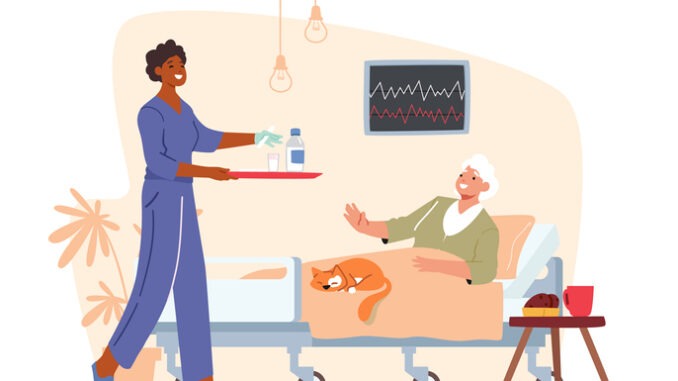
What do nurses need to know before they consider returning to practices?
CREDIT: This is an edited version of an article that originally appeared on NHS
With over 27,000 more nurses now employed across the NHS, the Department for Health and Social Care has been working with colleagues to deliver on the commitment to boost the NHS’s ranks with 50,000 more nurses and make sure they are supported by the best and brightest talent.
One way in which the NHS has been boosting its nursing workforce is through the return to practice (RTP) programme. Led by Health Education England (HEE), this programme provides a route for bringing valuable nursing and midwifery expertise back into the profession. Since its launch in 2014 nearly 8,000 nurses have returned to the NHS, and 25 universities across England now offer RTP nursing and midwifery courses.
Case studies
One trust that has done excellent work in this area is Oxleas NHS Foundation Trust, which has brought in more than 30 nurses through the RTP programme over the last seven years.
Lisa Newsum, placement and preceptorship manager at Oxleas, says that one of the major benefits of the RTP programme is the range of experience and knowledge returning nurses bring with them.
“RTP nurses who secure employment with the trust tend to move into Band 6 roles more quickly, which is testament to their previous experience. We find that our returning nurses bring with them a different skill set, and perspective, which really benefits our newly-registered or younger staff.
“There are challenges – particularly for those who have rejoined after 10, or even 20, years off the register. New technology is obviously a factor in how quickly a returner gets back up–to-speed, but our preceptorship programme makes a huge difference in supporting RTP nurses to transition back into the workplace”.
Kodjo Sosuh is one such nurse who has returned to the nursing profession. After qualifying as a mental health nurse in 1995, Kodjo stepped away from the NHS four years later to set up and manage a number of businesses in the care and nursing sector and then relocated to Ghana, where he worked in national politics.
In 2018 Kodjo returned to practice via the University of Greenwich’s RTP course and he is now a ward manager and clinical team leader in Oxleas’ forensic directorate.
“My interest in people’s wellbeing is one of the key factors in my successes both in and outside of nursing,” he explains. “Underpinning it all is my personal ethos – nursing was my first love when I completed my A levels in 1990, and always will be. Once a nurse, always a nurse!”
Find out more about the return to practice programme
Returning healthcare professionals can attend RTP courses and undertake their clinical practice learning on a flexible or part-time basis. Some returners choose to take their courses through an employer-led route – which offers a salary (usually at Band three) and an offer of employment on completion. Others follow the non-employed route, which is supported by HEE, and has a stipend of £1,000 to help with costs related to taking the course. RTP clinical placements offer flexible arrangements for the returner to complete their required clinical hours.
For more information on how nurses can return to practice, visit Health Education England’s website here.


Be the first to comment